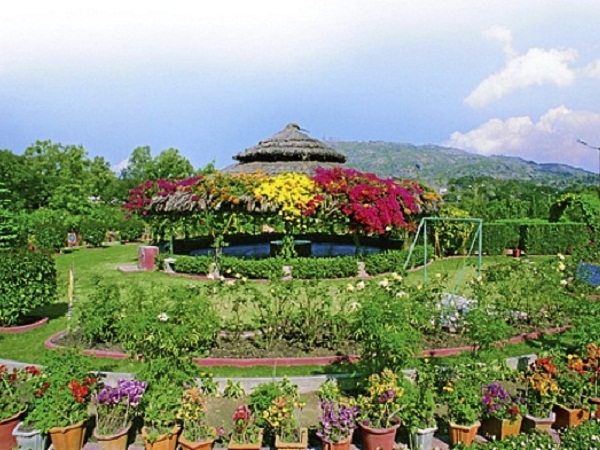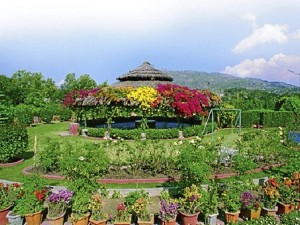
Mount Abu, a popular hill station in Rajasthan, northern India, stands majestically like a jagged rock in the desert of the Aravalli mountain range.
Although known more for temples and pilgrimage sites, this is also where you can find the Peace Park, a nonreligious and nondenominational tourist destination that is a respite for the soul as well as the senses.
The eight-hectare development has produced lush gardens from barren soil. It is under the stewardship of the Brahma Kumaris World Spiritual University, an international organization that teaches meditation and spirituality.
The park is run by a family—Kishor and Vasanti Shah and their son Bejul—all longtime meditation practitioners. There are 55 volunteers from Brahma Kumaris, and 55 laborers and gardeners who tend to the garden with love.
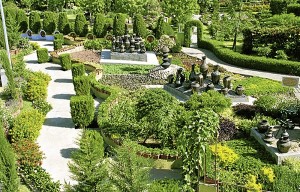
Peace Park is a miracle in itself because most of the flora and fauna were sourced from outside Mount Abu and planted on difficult soil. It has withstood the harshest weather conditions, from droughts to frosts, yet the plants are able to thrive and bring happiness to the average 150,000 visitors a month, says Bejul.
During Diwali, the Indian New Year, some 70,000 come to enjoy the cascade of brilliant colors, the tropical foliage and the quiet mystical atmosphere. When India’s president Pratibha Patil was still the governor of Rajasthan, she would take silent walks here to start her day.
Although the family had no background in gardening, Vasanti would have visions of the plants that would enhance the Peace Park’s horticulture profile.
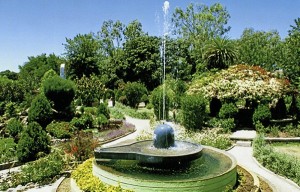
The walk begins with rows of dense evergreens of thuja compactas, casuarinas or saru trees, potted dracaenas, coleuses, African lilies and begonias that run the concourse. The entrance is surrounded by geraniums, white lilies, chrysanthemums and water plants.
Peace Park sweeps down like a terrace with living walls of plants to create different garden themes and plots. Trees of white lace flowers fence in the pergola. Visitors look up in awe at the dombias, large trees with blossoms bobbing down in bunches of brilliant hues. There are more walls of orange, pink and yellow hibiscus that create little intimate pockets.
Cool early mornings in Peace Park are magical, as pale pinks and oranges diffuse gray clouds, and the lyrical sounds of hummingbirds and sparrows provide calming music. Birds sleep on purple bauhinias, and squirrels scamper around the bottlebrushes and fig trees.
Delicate scent
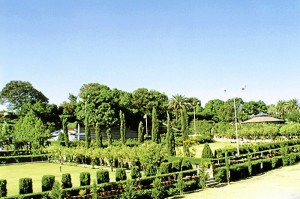
Sparrows and eagles hover above the lemon tree plantation. By day, the champa trees (the equivalent of sampaguita) exude their delicate scent. After 8 p.m., the night queen shrubs release a fragrance that is more powerful than burning incense.
Among the visual surprises of Peace Park are the variegated foliage and the thickness of growth that can turn simple aloe vera plants into lush hedges with red flowers. When birds of paradise, ox daises, flowering aloe veras and geraniums bloom in summer, they look like a fireworks display, a sudden burst of color.
In the rock garden, the soothing sound of water trickling from the Shiva Lingam sculpture as it cascades from level to level adds inexplicable gratification. The rocks themselves are hosts to succulents sitting in crevices. They are softened by creeping vines of monsteras and plots of white daisies. Shade is provided by a canopy of fir trees, bottle and fan palms planted along the pond.
The park has covered spaces where the teachings of Brahma Kumaris are visually explained. Although Peace Park doesn’t charge fees, visitors are required to watch an audiovisual presentation in its mini-theater on the soul, the Supreme Soul, and the importance of now.

The Meditation Cave simulates worship in wilderness and seclusion. An orb-shaped stone, symbolic of the form of the Supreme as Light, is the centerpiece. The chanting of “Om Namah Shivaya” (translated as an adoration of Shiva or God the Benefactor) creates a hypnotic effect. Meanwhile, a Meditation Dome silences the chatter of the mind for any visitor.
Peace Park offers other exhibits such as angels and swans, and a train which illustrates the various stages in man’s life, the benefits of meditation, and how changing thought patterns can improve the quality of one’s life.
Past the topiaries of bougainvilleas, date palms and shrubs of salvias are little signs with sayings, such as, “Whatever actions I create, others will follow.” In the middle of the terrace of potted roses, a sign reads, “To remain happy, forget the past, learn from it and don’t repeat.”
Visitors can walk in silence under the rose vines or meditate under the passion fruit climbers and date palms. At the apex of this terraced park is the giant “Aum” or peace sign amid begonias and bamboos. It overlooks the patches of citruses and bougainvilleas.
When people leave Peace Park, sometimes they are inspired to give up bad habits such as smoking or getting easily upset. Or at least, a sign in the flower beds offers this sage advice: “Good thoughts which transform the self can transform the world.”
For details, e-mail [email protected], or contact Brahma Kumaris, Shantivan Complex, Post Box No. 1, Abu Road (Raj.) 307510, tel. 0941-4151111.

